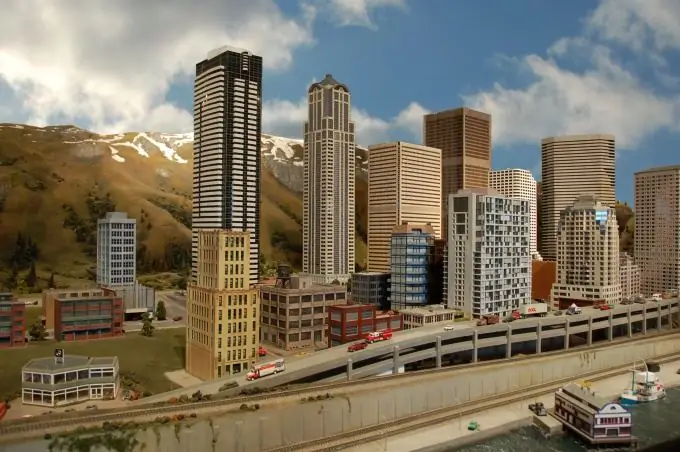Not only children, but also some adults like to build miniature volumetric panoramas. There are even people who make them professionally. A large-scale volumetric copy of an urban or rural landscape will decorate any interior.

Instructions
Step 1
Assemble a case for a miniature panorama from ordinary colorless and transparent plexiglass. Plexiglass sheets are glued together with a colorless version of Moment glue or similar. Do not install the front panel on the body yet.
Step 2
Saddle the background in two dimensions. Draw or print it on a piece of thick paper. You can use a mixed technique: print something and draw something. If the printer is black and white, the printout can be colored manually. This technique of hand-coloring black and white images from printing has existed long before computers and printers were used for printing. It is called "splint". Cut the finished background to the dimensions of the back wall of the case, lamination if desired, and then glue from the inside. Please note that some inks and printer inks do not change color or blur over time after lamination or exposure to glue.
Step 3
If you need to highlight some background elements over others, then either saddle them with colored ones, and the rest with black and white ones, or make their volumetric models in any way available to you. It can be ajar doors, shutters, house number plates, visors. Do not select more than three or four background elements in this way.
Step 4
On the ground, asphalt, grass, floor, etc., depending on what is being modeled, saddle slightly voluminous. Use a variety of materials at hand, such as sandpaper (light to simulate asphalt, dark to simulate earth). Use stripes of paper or white putty, such as Stroke, to simulate road markings. Get creative and you can simulate any surface.
Step 5
Perform the volumetric figures of people, animals, vehicles in any technique available to you. You can also use ready-made toy figures, with which children are no longer interested in playing. Secure them with glue.
Step 6
Any volumetric layout looks much more interesting if it is highlighted. But be sure to organically fit the light sources into the artistic design. It is best to make mock-ups of street lamps, and build LEDs into them. Use white LEDs to simulate mercury flashlights and yellow LEDs for sodium lights. From the small ones, lay out glowing inscriptions on the signboards of the shops, illuminate the drawn sun with them. The main thing is to correctly select the resistors for the LEDs, as well as to use a safe power supply that is suitable for voltage and current. Don't make the illumination too colorful and don't overuse the blue light.
Step 7
After completing the assembly of the panorama, let the glue dry, and then cover it with the removable front wall.






